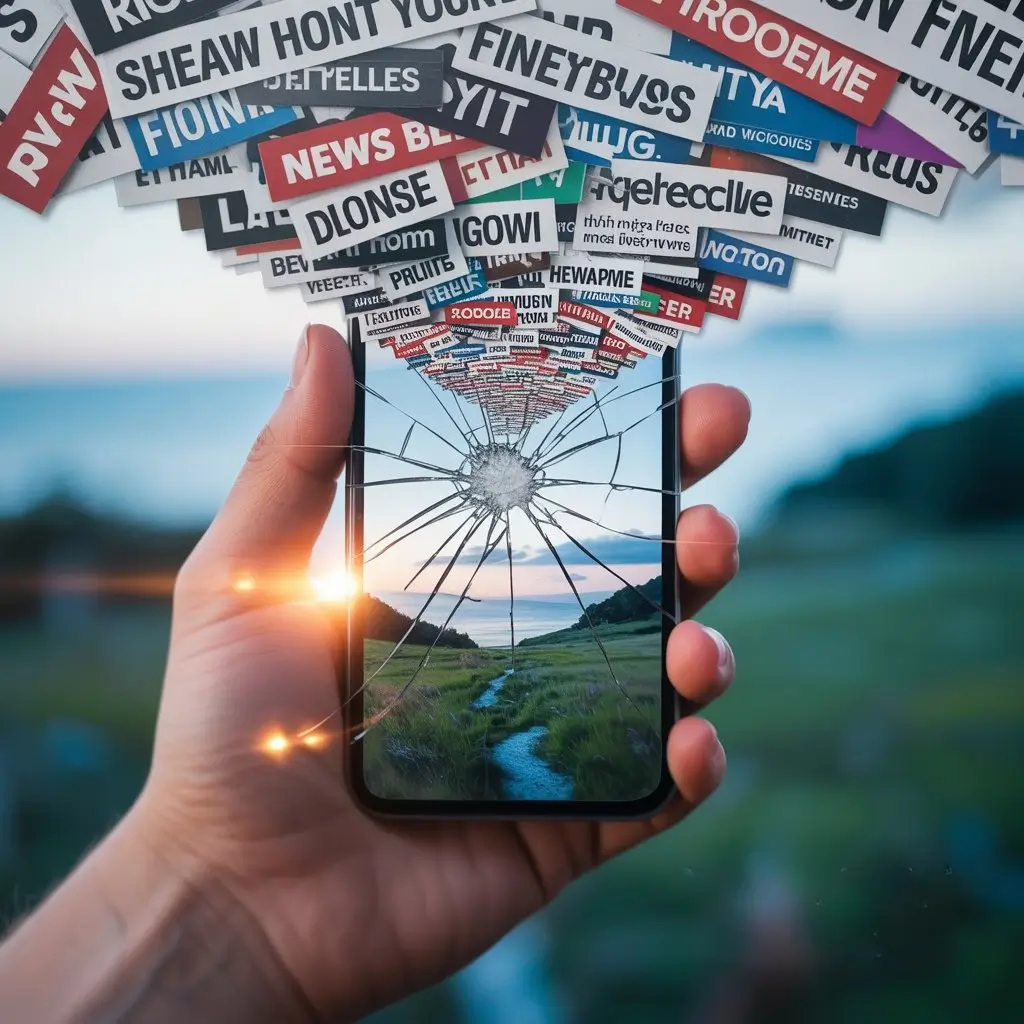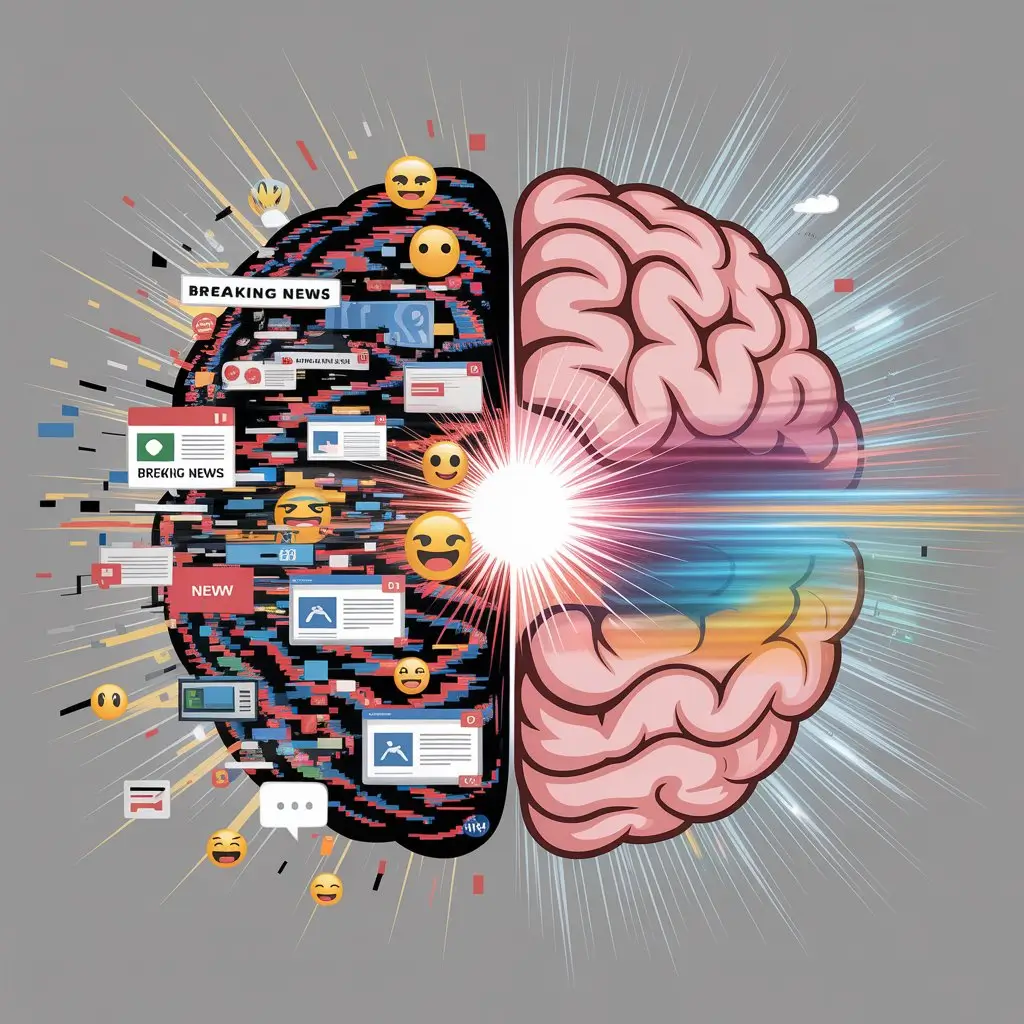When the Scroll Becomes a Spiral
You didn’t plan to spend another hour on your phone. You only meant to check the news. But somehow, you’re still scrolling, half an hour later, eyes glazed, heart heavy, brain buzzing. You close the app, but you don’t feel better. You feel worse. Sound familiar? Welcome to the world of doomscrolling. It’s not just a habit. It’s a psychological trap that drains your energy, hijacks your attention, and messes with your peace of mind. But here’s the good news: you can break the cycle. This guide will help you understand the problem, recognize your patterns, and learn how to stop doomscrolling and reclaim your mind.
What Is Doomscrolling?
Understanding the Habit
Doomscrolling is the act of continuously consuming negative or distressing news online. It’s a behavior where you keep scrolling, hoping to find clarity or closure, but instead, you sink deeper into anxiety and helplessness.
Unlike casual browsing, doomscrolling is a compulsive behavior. You’re not scrolling for fun; you’re reacting to fear, worry, or stress. This often happens late at night, during breaks, or whenever you’re looking for distraction.
Why It’s Not “Just Scrolling”
You might think you’re just trying to stay informed, but doomscrolling has a very different impact on your brain. Instead of learning or relaxing, you end up:
- Increasing your anxiety levels
- Feeling more helpless or hopeless
- Struggling to focus on anything else
Most of the time, you walk away from your screen feeling worse than when you picked it up.
Signs You Might Be Doomscrolling
- You check the news or social media several times a day, even when it stresses you out
- You lose track of time while scrolling
- You feel mentally exhausted or emotionally numb afterward
- You have trouble sleeping after being on your phone
Why Doomscrolling Is So Addictive
The Science Behind It
Your brain is wired to pay attention to threats. That’s how humans survived for thousands of years. Negative headlines, disturbing images, and controversial posts activate your amygdala, the part of your brain responsible for detecting danger.
Each time you scroll, your brain gets a little hit of dopamine, the reward chemical, especially when you see something new or shocking. This creates a loop:
- You feel anxious or bored
- You scroll to distract yourself
- You find something disturbing
- You keep scrolling to “find something better”
- The cycle continues

Algorithms Aren’t on Your Side
Social media and news platforms are designed to keep you engaged. The more you scroll, the more they feed you similar content. That means once you click on one upsetting story, you’re more likely to see ten more just like it.
Emotional Triggers That Keep You Hooked
- Uncertainty (e.g., global crises, political chaos)
- A need for control or information
- A desire to feel connected or aware
The Effects of Doomscrolling on Your Mind and Body
Psychological Impacts
When you’re constantly consuming bad news, your brain goes into stress mode. This affects your mental and emotional health by:
- Increasing your risk of anxiety and depression
- Making it harder to concentrate or complete tasks
- Creating a sense of hopelessness or doom
Physical Consequences
- Poor sleep quality due to screen exposure before bed
- Eye strain, headaches, and tension in your neck or shoulders
- Sedentary behavior that affects your posture and energy levels
A study from the University of California found that people who spent more time on news apps during crises reported higher levels of distress and physical symptoms like fatigue.
How to Stop Doomscrolling and Reclaim Your Mind
Breaking the habit won’t happen overnight, but with awareness and intention, you can take back control of your attention.
1. Acknowledge the Habit
Start by noticing when and why you doomscroll. Ask yourself:
- What am I feeling before I pick up my phone?
- What am I hoping to find?
- How do I feel afterward?
2. Set Screen Boundaries
- Limit news and social media to set times (e.g., once in the morning and once in the evening)
- Use app timers or digital wellness tools to restrict usage
- Turn off notifications for non-essential apps
3. Create Tech-Free Zones
- Keep your phone out of your bedroom
- Avoid screens during meals or family time
- Designate at least one hour per day as phone-free
4. Replace the Habit with Better Ones
- Journal your thoughts or emotions instead of scrolling
- Go for a walk or do light exercise when you feel anxious
- Listen to music, podcasts, or audiobooks that uplift you
5. Practice Mindfulness
Simple breathing exercises or meditation can ground you and reduce the urge to check your phone.
Healthy Digital Habits That Stick

Creating lasting change means forming new habits that serve you.
Daily Digital Hygiene
- Start your day without screens for the first 30 minutes
- Use apps like Forest or Freedom to stay focused
- Curate your social feed to include more positive, balanced content
Evening Rituals
- Dim your screen or use blue-light blockers after sunset
- Read a physical book or write in a gratitude journal before bed
- Use a real alarm clock instead of your phone
5-Day Mind Reboot Plan
| Day | Action Step | Goal |
|---|---|---|
| Day 1 | Track your scrolling patterns | Awareness |
| Day 2 | Turn off push notifications | Reduce distractions |
| Day 3 | Set phone-free hours | Create intentional breaks |
| Day 4 | Replace one scroll session with a walk | Reset your nervous system |
| Day 5 | Reflect on how you feel (journal entry) | Reinforce positive change |
Tools and Apps to Help You Stop Doomscrolling
- Freedom – blocks distracting sites across devices
- AppBlock – allows scheduled screen breaks
- Forest – motivates you to stay off your phone by growing a virtual tree
- Insight Timer – free meditation and mindfulness tools
FAQ: Stop Doomscrolling and Reclaim Your Mind
What is doomscrolling, and how do I know if I’m doing it?
Doomscrolling is the habit of endlessly scrolling through negative or distressing content, especially online news or social media. If you often feel worse after being online, or find it hard to stop even when you’re not enjoying it, you may be doomscrolling.
Can doomscrolling really impact my mental health?
Yes. Studies show that exposure to a constant stream of bad news can lead to increased anxiety, depression, and emotional fatigue.
How long does it take to break the habit?
Most habits take 21–66 days to change, but even small adjustments can help you feel better within a week.
Should I quit social media completely?
Not necessarily. Instead, set healthy boundaries, mute toxic accounts, and follow pages that inspire or educate you.
Final Thoughts: Your Attention Is Worth Protecting
In a world where fear-based content is constantly fighting for your attention, choosing what you consume becomes a radical act of self-care. Doomscrolling may feel like you’re staying informed, but in reality, it’s feeding your anxiety.
Reclaiming your mind doesn’t mean disconnecting entirely. It means choosing your input with intention, protecting your peace, and making space for joy, clarity, and calm.
You don’t need to doomscroll to care about the world. You just need to care about your mind, too.
Ready to take the first step? Try the 5-Day Mind Reboot Challenge and let your brain breathe again. ➤


1 thought on “Doomscrolling Dangers and How to Stop It for Good”